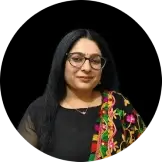
Soniya

Promotional marketing is the umbrella under which your marketing strategy unfolds to create brand awareness, attract customers, and push sales for your product/services. It refers to targeted campaigns and incentives like discounting, time-limited offers, contests, and loyalty programs, designed to entice customers and push that instant call to action. It creates urgency and exclusivity; thus promotional marketing creates a ruckus when making purchase decisions.
More than just one-time sales, effective promotional marketing establishes relationships that support long-term brand loyalty. When promotions consistently deliver value to customers, they not only return for repeat business, but they also further the establishment of relationships. Promotional strategies can also increase brand recall, so when customers are making future buying decisions, they will remember and prefer your brand over competitors.
With digital marketing on the rise, promotional strategies have evolved to include online channels like social media, email campaigns, and influencer collaborations. Traditional methods like in-store promotions and direct mail still have value, but you need to be multi-channel to maximize your promotional impact. By planning and executing promotions well, you can acquire customers, improve retention rates, and be part of the market.
Table of Contents:
Promotion in marketing means all the different ways businesses communicate their products or services to their audience. It’s one of the 4Ps (Product, Price, Place, Promotion) and is key to attracting new customers, increasing brand awareness, and changing consumer behaviour. Promotion involves different tactics like advertising, sales promotions, public relations, personal selling, and direct marketing, all aimed at persuading customers to engage with a brand and take a desired action, like buy, sign up, or join a loyalty program.
The main goal of promotion is to create awareness and generate interest in a product or service. Businesses use promotional strategies to highlight their offerings’ benefits and unique selling points and make them more appealing to customers. These tactics can take many forms, such as digital and traditional advertising (TV, radio, social media, search ads), limited-time offers and special discounts, contests and giveaways, influencer partnerships, and press releases. Each promotional method is designed to reach a specific audience segment and get immediate engagement.
Promotion is crucial for a brand to succeed in today’s competitive market. Businesses must have a well-planned promotional strategy aligning with their business goals and customer needs. By using the right mix of promotional channels online and offline businesses can reach more, build strong relationships with their customers and drive sustainable growth. Whether you’re a small business looking for local visibility or a global brand launching a new product, promotion in marketing is a great way to get noticed and influence buying decisions.

Marketing is an umbrella term that covers all activities related to creating, communicating, and delivering value to customers. Promotion is a subset of marketing focusing on communication strategies to generate interest and sales.
| Aspect | Marketing | Promotion |
|---|---|---|
| Scope | Includes market research, product development, pricing, distribution, and promotion. | Focuses on activities that communicate product benefits to consumers. |
| Objective | Long-term brand building and customer relationship management. | Short-term sales boost and customer engagement. |
| Strategies | Branding, content marketing, SEO, PPC, social media, etc. | Discounts, events, influencer partnerships, social media campaigns. |
The Marketing Mix is a marketing fundamental that consists of four key elements, commonly referred to as the 4Ps: Product, Price, Place, and Promotion. These four work together to create a marketing strategy that ensures a business reaches its target audience and meets customer needs.
Of the four, Promotion is the most important in driving brand awareness, consumer perceptions and sales. It includes advertising, public relations, sales promotions and digital marketing to communicate a product’s value and get customers to take action.

Promotional marketing is a powerful tool for helping businesses achieve many goals, from increasing brand visibility to revenue growth. Engage consumers and influence their purchasing choices with various promotional tactics, advertising and discounts like contests and loyalty programs. Such is the scope of promo marketing objectives and the contribution they bring with respect to the success of brands.
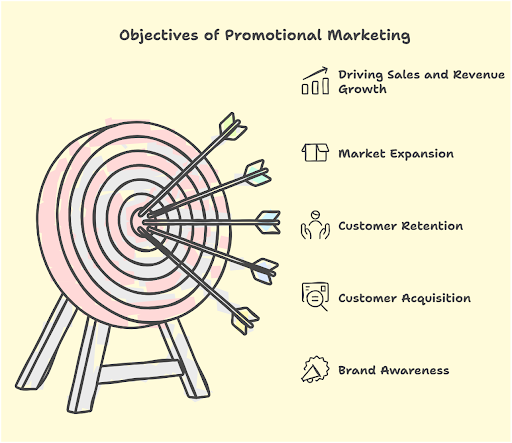
One of the main objectives of promotional marketing is to increase brand recognition by getting potential customers to know about a company’s products or services. Through advertising, social media, influencer partnerships, and public relations businesses can introduce their brand to a bigger audience. Brand recognition promotions are all about storytelling and the building of emotional connections to establish a brand in the market. Seeing a brand message multiple times solidifies retention in sitting around in the customers’ minds on their minds when it comes to deciding what to buy.
Promotional marketing plays a big part in attracting new customers by offering incentives that encourage first-time buyers. Businesses use discounts, free trials, referral programs, and intro offers to lure in potential buyers. For example, e-commerce brands give first-time buyers a discount code, while subscription-based services offer a free trial to get people to sign up. These tactics reduce the risk of trying something new and make it easier for people to take the first step to engaging with a brand.
But getting new customers is only half the battle. Businesses also need to keep existing customers engaged to build long-term loyalty. Attracting new customers is half the battle for a business; the rest its retention and engagement of the existing customers to foster long-term loyalty. Different techniques applied are loyalty programs, personalized discounts, exclusive member deals, and re-engagement campaigns. Commonly known among the brands, the point-based rewards system permits customers to earn some points with each transaction, and these points can be later redeemed for further discounts.
Promotional marketing has immediate and measurable goals: sales growth. Why is it important? Promo marketing consists of immediate and quantifiable objectives: sales growth. Why is it important? Companies achieve this by putting forth time-sensitive discounts, flash sales, bundled deals, and seasonal promotions that incite a need to purchase. The more these things are done, the more urgency propels the customers to buy before time runs out. Upselling and cross-selling are types of promotional marketing that induce a higher spending level: “if you spend $50, shipping will be free” or “discounts of up to 50%.” AOV gets lifted too.
Promotional marketing could be utilized by businesses looking to grow their consumer base and move into new markets. Promotions are ways for brands to target innovators and introduce products in various regions of their choosing. Local advertising, region-specific deals, partnership with influencers, and targeted social media campaigns could be some ways to enter new markets.
To execute these special methodologies successfully, businesses can use an assortment of instruments and stages:
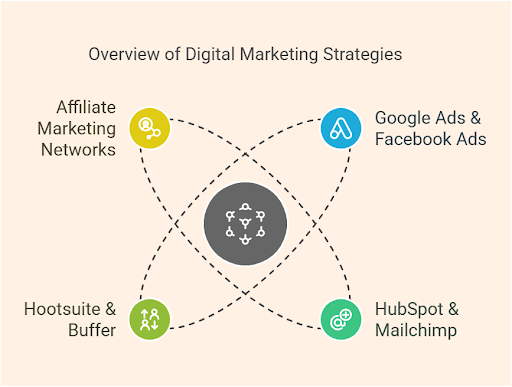
These stages offer capable paid publicizing alternatives to target particular groups of onlookers based on behavior, area, and interface. Utilize them for PPC campaigns or profoundly focused on advertisements.
These tools help businesses manage email marketing campaigns, automate communications, and track customer engagement. They can also be used for personalized offers, drip campaigns, and more.
Social media administration devices like Hootsuite and Buffer permit businesses to plan, track, and lock in with supporters over numerous platforms essential for advancing deals, challenges, and occasions.
Member showcasing stages like ShareASale and CJ Member permit businesses to work with influencers or bloggers to grow their reach and drive deals through referral joins.
As part of its marketing plan, a business must define measurable goals and set targets for its promotional activities accordingly. Without objectives and KPIs, it becomes impossible to state whether a promotion had an actual impact on the business.
It can thus be extrapolated that the business entities can work with the data to enhance their approaches, improve the allocation of resources, and increase the effectiveness of their promotions. The following KPIs discussed below are outlined and seen as integral to a promotional campaign.
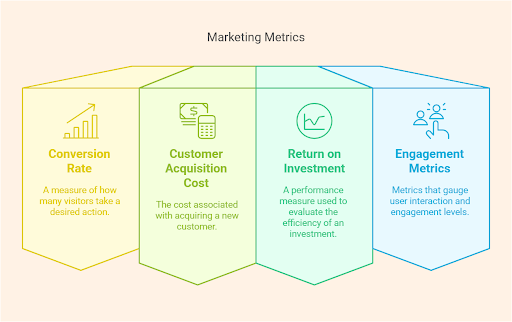
This means that it is the ratio of people who act on a promotion and take a desired action-whether a purchase, sign-up to e-newsletters, app download, claim for prize/discount, etc. The marketing content must become interesting and powerfully resonate with the audience, as 80% of the people convert. When the conversion rate is low, businesses are supposed to rethink the messaging, offer tweaks, or user experience for a better payoff.
Using this marketing channel, the brands can determine the high-priority spending on advertisements directed toward acquiring new customers-discount, influencer partnership, and so on. What goes in here? One key surefire way of sustainable CAC is that the acquisition is sustainable. Otherwise, with an improper retention strategy, the profitability goes below desired levels if you spend high on customer acquisition.
The Return on Investment is used to analyze the profit of a marketing campaign by assessing its costs against the revenue generated. A positive ROI means revenues have been captured successfully under targeted sales and revenue metrics. A negative ROI means that revenues defined under the sale were not captured for the campaign, thus indicating that the campaign failed to cover the costs, making it not prudent considering strategic spending. One aspect of tracking ROI is determining which promotional strategies and expenditure thus bring the maximum returns and where weak points can be targeted for improvement.
What is Engagement? For example, it measures how effectively users react to different promotional elements: such as social media, emailing, or visiting a website. The main ones are:
Increased engagement typically translates to increased brand awareness and, consequently, higher customer engagement. If engagement seems to be poor, it must be noted that related promotional mergers must be evaluated as opportunities for change. In this area, great attention should be paid to promotional message, art, and segmentation in particular commitment toward grabbing attention.
While acquiring new customers may be key to success in any business, retaining existing customers is more critical. The customer retention proportion depicts the percentage of customers repeated after a promotion. A promotional campaign should direct its efforts not just to attract new customers but also to strengthen loyalty programs and discounts to strengthen long-term customer relationships. Should retention rates fall below expectations, companies will have to step up their post-promotional engagement to improve retention levels.
Sales promotions have considerable influence over customer sales and engagement. These motivate the buyer, thereby giving immediate sales incentive to prospective customers while moving toward endorsements of instant widespread urgency “Maybe we should make our purchase now; this deal will not last long.” Finally, these promotions serve as viable engagement methods for customer relationship management that transcend the single transaction. We will examine the types of promotions more in-depth to see how this can be accomplished.
Flash sales create an unquestionable sense of urgency and excitement over a limited period. Flash sales create a developed sense of urgency in consumers to seize the deal before it disappears. Combined with price incentive, flash sales are incredibly effective at increasing volume pricing in sales. This was effective in garnering a large volume of sales and generated hype about the product, leading customers to really talk about the company’s promotions, and thereby extending their brand engagement.
Since of EMP, Challenge advancements and giveaways are great for brand presentation. They can be easily executed and permit members to lock in with the brand, in this way creating confidence within the brand and maximizing the chances of securing rehash deals within the future. Challenges and giveaways will offer assistance increment engagement and social media intuitive (e.g., enjoying, sharing, and labeling companions to enter for prizes) that increment brand perceivability and offer assistance keep track of potential customers.
Through valuable discounts and exclusive offers, a loyalty program encourages repeat purchases. This, in turn, significantly increases brand loyalty and emotional bonds. Making buyers feel important through personalized rewards based on purchase history is something the customers will appreciate and return for more purchases.
Discount deals for sales on weekends or combination specials spur the consumer’s desire to act swiftly-however flower cost it-and consequently increase impulse buying. The sales invoke the mentality of panic buying, making the offer instantly appealing and call to action.
Reference Programs ask existing customers to refer a friend or family member to receive free services: “Head on over and help yourself to some free services.” This helps to attract new clients and keep existing ones engaged by giving existing customers benefits for referring the business. Personal recommendations lead to a high conversion rate and quality leads.
Sales promotions focus mainly on stimulating sales, enhancing the goodwill and interaction of a brand in question, or creating consumer loyalty. A company has to approach promotional marketing techniques to market its products or services that will strike a good balance. Here follows the elaboration of the various types of promotional marketing.

Sales promotions create immediate purchases and increase short-term sales volume. They usually use incentives including discounting and limited-time offers to augment a good or service’s appeal to a purchasing consumer.
Coupons and discounts spur purchases by reducing a purchase price for a shorter time period. They include percentage offers, flat rate offers, and money-off coupons. Such promotions spur the customer to act urgently, increasing the likelihood of the customer purchasing that product. An additional means for triggering interaction and engagement is exclusive coupon codes given to recurrent customers and new subscribers.
BOGO offers motivate consumers to make additional purchases by providing a free item for a specified quantity of items bought. Such sales promotions readily contend with issues regarding bulk purchases while increasing sales volume for consumer goods usually sold in bulk, such as toiletries, snacks, or clothing. Not only do BOGO offers boost immediate sales on one specific product, but they also increase inventory turnover overall.
Though only a tiny period of flash sales means selling specific products at reduced rates, the fear of missing out further triggers the consumers’ motive to purchase them. Flash sales greatly help to sell off old stock, propel new products, and promote sales during slumps.
With online advertising, companies get a broader target audience and more sales. Digital promotions are more effective because they strategically use a variety of online channels to elicit immediate responses from consumers.
Platforms like Facebook, Twitter, and Instagram allow companies to market their products directly to consumers. Promotions on social media include contests, giveaways, or special offers to capture the attention of new customers and bring more people to websites and stores. These showcasing activities look to boost deals, raise brand mindfulness, and energize brand sharing on different social media channels.
Email Marketing Promotions: Companies can connect with clients by using email marketing. To increase sales, specific discount codes might be provided to particular products. Companies can interface with clients by utilizing mail showcasing. To extend sales, specific markdown codes may be given for particular products. An advancement would make clients feel acknowledged and energize them to require activity. To ensure more engagement, offers can too be custom fitted through division based on past client behaviors.
BusinessesBusinesses can target potential clients with PPC notices on different stages like Google or Facebook. Too, participants can receive giveouts or exclusive rebates as a way of saying much obliged for being a few of the primary individuals to undertake out the item. PPC campaigns prove very useful for generating large numbers of new customers, as most of the targeted leads should have a strong interest in the product.
Such promotions allow consumers to connect directly with the brand by being present at events and trade shows. Such near contact locks in clients in impactful ways and makes beneficial associations with the brand. Such an occasion gives a fabulous stage for brand engagement, wherein clients get involved and purchase simultaneously.
The days of externally producing brochures are long gone. The new buzz is trade shows, an industry-wide gathering for the sale of goods or services. Trade shows enable networking and the establishment of relations, so they are good platforms for launching new products. Sometimes, discounts are specifically offered to trade fair visitors.
Parties can be staged to celebrate and create hype when launching new products, targeted at customers, media, and social media personalities. These occasions are either farther or in-person and proposed to offer the group of onlookers the primary see at the item and make energy. Additionally, participants can get giveouts or select rebates as a way of saying much obliged for being a few of the primary individuals to undertake the item.
Pop-up stores are transitory stores that target particular advancements or regular exercises. They are perfect for businesses that need to form a sense of criticalness by advertising select, time-limited items or rebates. They moreover offer assistance to test unused items or markets and give clients a lock-in shopping involvement.
An influencer or member-promoting technique can assist businesses in breaking into modern markets by collaborating with experts within the field or associates.
Influencer marketing focuses on working with popular figures from a particular sector who possess large social media followings. These influencers endorse a brand or product that their followers subsequently purchase because the influencers’ recommendation is perceived as more credible than an ad. Such marketing is very effective for younger populations and can help increase brand awareness, trust, and sales.
Associate promoting empowers businesses to work with makers, bloggers, or other marketers with a gathering of people. They showcase the brand utilizing referral joins and get a commission for each deal made through the interface. This show radically makes strides in the company’s reach without investing forthright cash, which benefits both sides. Associate programs can easily maintain deals and increment transformations and income without any additional exertion.
The Marketing Mix is one of the most essential components of marketing since it allows a business to manage its products, pricing, placement, and promotional activities. In the case of specific marketing communications, the marketing mix guarantees that everything is coordinated for the marketing campaign to be effective, practical, and consistent with the brand. Now, let us analyze how the various components of the marketing mix fit into the promotional marketing activities:
Each campaign rotates around the thing being advanced. In limited-time showcasing, companies must guarantee that the advancements underline the product’s one-of-a-kind offering focuses (USPs). The USP makes a difference the competitor gets the item way better, and the advancement ought to capitalize on these highlights. For illustration, on the off chance that the thing has predominant quality, enjoyable usefulness, or a high-end plan, these properties must be included within the trademark.
Pricing is very crucial for any promotion. Every promo discount, bundle or offer must always fit the general pricing framework for the brand. While all promotions seem to have a considerable discount, it is necessary to check how the discount affects brand positioning in the long term. Customers may perceive the brand as “cheap” and undermine the product if it is too much.
Using where and how the product is available significantly affects the development of effective promotion campaigns. In this part of the marketing mix, a product’s distribution place entails choosing the appropriate channels for the online and offline audience. Promotion methods must be adjusted for physical shops, online shops, and independent sellers.
The promoting mix’s advancement component typifies all viewpoints that attempt to seize the audience’s consideration. It incorporates measures like publicizing, deals advancements, open relations, occasions, and indeed individual offering. Whether computerized or traditional, all special materials need to follow to the brand’s tone and voice. Such arrangement makes a difference pass on a proficient and cohesive picture that advances customer believe.
Creating a effective special showcasing campaign requires a precise approach that mixes inventiveness with methodology. By taking after these steps, businesses can guarantee their campaigns are impactful, on-target, and drive wanted comes about. Let’s break down each step in detail.
Before launching any promotional campaign, it’s crucial to set clear objectives that define what you want to achieve. This may extend from expanding deals, moving forward brand mindfulness, creating leads, or advancing a modern item. Once the destinations are built up, you ought to too characterize Key Execution Markers (KPIs) that will degree the victory of your campaign.
Understanding who you need to reach is key to any fruitful special campaign. Target group of onlookers investigation includes characterizing the particular socioeconomics, psychographics, behaviors, and needs of the individuals most likely to lock in along with your brand and buy.
The channels you choose for your promotion should align with where your target audience spends their time. Some popular promotional channels include social media, email marketing, search engine ads (PPC), in-store promotions, or event-based promotions.
The substance of your special materials is the center of the campaign. This incorporates visuals, copywriting, calls to activity (CTAs), and general information. The substance have to be be compelling, clearly communicate the regard of the progression, and alter in conjunction with your brand’s voice and values.
For any campaign to be compelling, you must have a clear budget and a timeline for execution. The budget ought to cover all viewpoints of the campaign, counting inventive generation, publicizing spend, computer program or stage expenses, and any motivations (like rebates or free shipping). The timeline diagrams when each stage of the campaign will happen, from the pre-launch stage to the ultimate follow-up.
After everything is in put, it’s time to dispatch the campaign. At dispatch, you ought to start checking execution quickly. This incorporates following how well the campaign is assembly its KPIs in real-time. Utilize analytics apparatuses to degree activity, engagement, deals, and other KPIs significant to your objectives. This permits you to see what’s working and what needs enhancement.
The ultimate step in running an effective limited-time campaign is to alter your procedures based on the information bits of knowledge you’ve assembled. On the off chance that a few angles of the campaign aren’t assembly desires, you ought to rotate or change them. This might cruel changing the informing, altering advertisements focusing on, or advertising distinctive motivations to boost changes.

Special promoting could be a effective way to lock in your target gathering of people and drive deals. By leveraging distinctive techniques, businesses can make energy around their items, increment brand permeability, and cultivate client devotion. Here are a few demonstrated special promoting thoughts to consider:
Limited-time rebates make direness and drive prompt activity from clients. After you offer an item at a decreased cost for a brief period, clients feel the weight to buy some time recently the markdown lapses. This sense of direness frequently leads to motivation buys and can be an effective instrument for expanding deals.
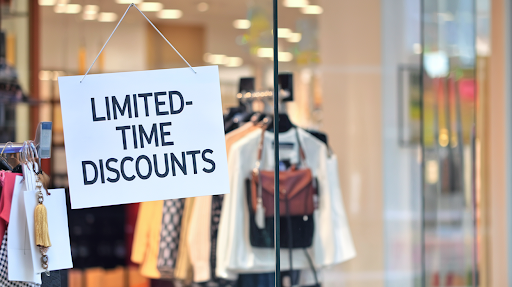
Offering free samples is a great way to introduce potential customers to your products. When consumers can try before they buy, they are more likely to purchase if they are satisfied with the sample.
Client referral programs energize existing clients to allude to companions and family in trade for rewards. Referrals offer help to develop your client base and utilize the conviction one person has in another’s proposition.
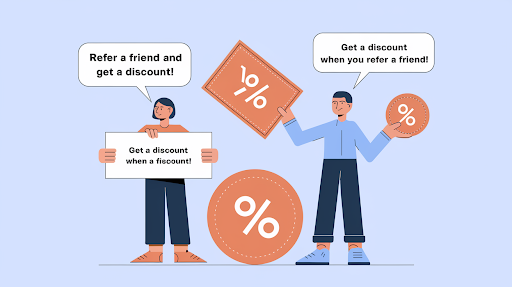
Gamified promotions engage customers by adding a layer of entertainment. For example, they could offer customers a chance to earn rewards through games, quizzes, or challenges.
VIP part bargains remunerate steadfast clients with elite offers, rebates, or early get-to-go deals. This, not as it were, empowers rehash trade but moreover makes clients feel esteemed and acknowledged.
Challenges and sweepstakes are fun and lock-in ways to energize client cooperation, whereas advertising is a chance to win prizes. These headways make vitality around the brand and can offer help in creating a client base.
Holiday and seasonal campaigns capitalize on specific times of the year (such as Christmas, Black Friday, or summer sales) to offer promotions that tap into consumer shopping behaviors during these high-demand periods.
Personalized email offers leverage customer data to send targeted promotions tailored to individual preferences or purchase history. This increases the likelihood of engagement and conversion since the offers feel more relevant.
Subscription-based discounts offer customers savings when they commit to regular purchases. Participations enable go over commerce and offer help businesses secure a unfaltering client base.
Loyalty programs reward customers for their continued support, often with points or rewards that can be redeemed for discounts, free products, or exclusive offers. These programs help foster customer retention and increase lifetime value.
BOGO deals are a great way to increase sales and move inventory quickly. Whether it’s “Buy One, Get One Free” or “Buy One, Get One 50% Off,” these promotions make customers feel they are getting extra value, encouraging them to buy more.
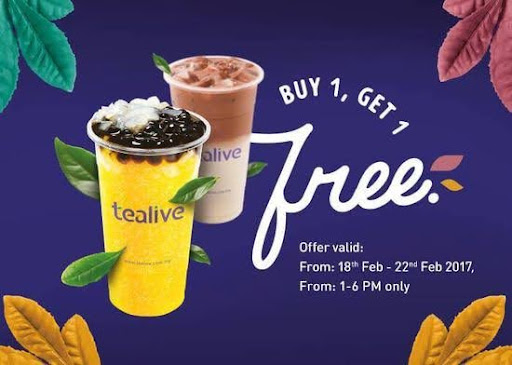
Partnering with influencers can give your brand access to a larger audience. Influencers have built trust with their followers, so their recommendations carry weight. Businesses can collaborate with influencers for product reviews, sponsored posts, or discount code promotions to drive sales.
Social media giveaways are an excellent way to boost engagement and increase brand visibility. Asking participants to like, share, and tag friends in exchange for a chance to win a prize helps spread brand awareness. This also attracts potential new customers who may later convert into buyers.
Flash sales create excitement and urgency by offering huge discounts for a very limited time. Since customers know the deal won’t last, they feel compelled to act quickly. Flash sales are perfect for selling excess inventory or attracting new customers with an irresistible offer.
Encouraging customers to share their experiences with your brand builds authenticity and trust. Businesses can run campaigns asking customers to post pictures, videos, or reviews of their purchases in exchange for a feature on the brand’s social media or a discount. User-generated content serves as social proof, influencing others to make a purchase.
Let’s take a closer seem at how a few brands have effectively executed limited-time promoting:
Starbucks has a Rewards Program that encourages repeat purchases by offering customers stars for each purchase. Customers can redeem stars for free drinks, food, or other rewards as they accumulate stars. Let’s take a closer appear at how some brands have viably executed limited-time advancements:
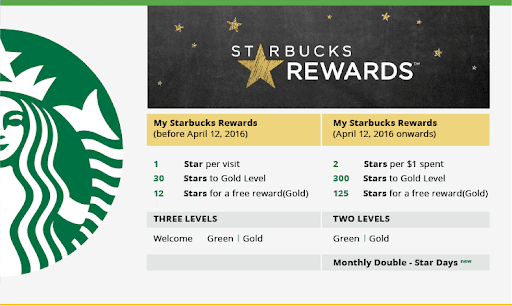
Nike habitually collaborates with competitors and influencers to drive brand mindfulness and advance modern item lines. By using the scope and legitimacy of well-known figures, Nike will increase presentations, attract unused customers, and set its position as sportswear worldwide.
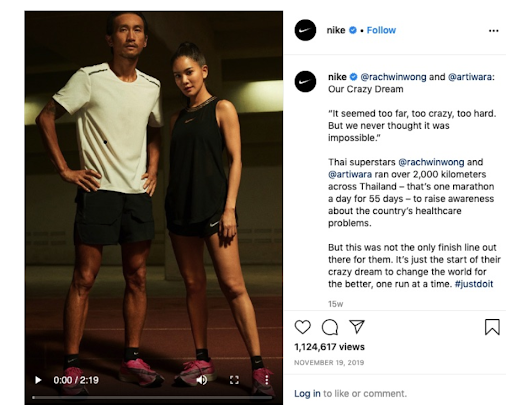
Amazon Prime Day is a large annual event offering exclusive offers and discounts to Prime members. The event will increase sales, attract new subscribers, and encourage existing members to purchase more frequently.
Coca-Cola’s “Share a Coke” campaign personalized its bottles by printing well known names on them. This extended client engagement as people looked for out bottles with their names or the names of venerated ones. It made a buzz on social media, drove bargains, and made buyers feel more related to the brand.
In 2025, the promotional marketing landscape will continue to evolve with new technologies and consumer behaviors shaping campaigns:
Manufactured insights (AI) is getting to be progressively requesting when advertising personalized promoting offers. AI makes a contrast in businesses prevalent get client slants and degree advancing campaigns in veritable time. This increases engagement and alter rates.
As voice assistants like Alexa and Google Assistant become more prevalent, businesses will need to optimize their promotional content for voice search to ensure that their promotions are easily discoverable.
Increased reality (AR) will change how shoppers associate with advancements, permitting them to essentially attempt items sometime recently purchased or connected with intelligent advertisements.
Customers will anticipate more intuitively substance tests, surveys, and gamified encounters that effectively include them within the limited time handle.
Blockchain innovation will encourage more secure and straightforward dependability programs, permitting buyers to gain and recover rewards with more noteworthy ease and belief.
Advancement showcasing may be a key driver of brand victory, empowering businesses to boost client engagement, create deals, and increment brand mindfulness. Companies can make fervor and cultivate more profound associations with their gathering of people by utilizing different limited time techniques—such as limited-time rebates, devotion programs, and influencer collaborations.
As promoting patterns advance, remaining ahead of the bend gets to be indeed more pivotal, and stages like 99minds are making a difference businesses optimize their special procedures through data-driven bits of knowledge and cutting-edge innovation. With the correct instruments and a vital approach, advancement showcasing can provide a noteworthy return on venture and fuel long-term trade development.